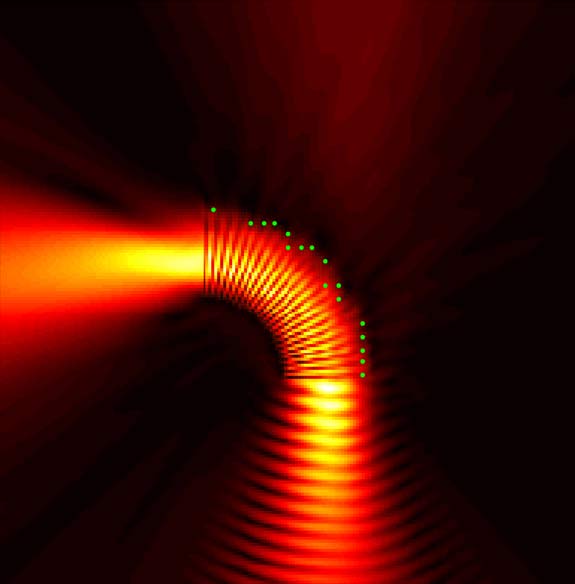Designing Optical Elements from Isotropic Materials
Using a conformal mapping technique, a mathematical technique which takes a set of points from one system and maps them on to a corresponding system, researchers are able to propose innovative designs for various optical elements. By using conformal mapping, instruments such as directional antennas, flat lenses, or bends, can be designed with isotropic materials. In contrast to most existing design techniques, the use of isotropic materials—materials that have the same look and composition from every angle—makes design much simpler.
This image shows the propagation of light through a bend created by the periodic arrangement of cylinders. The bend was designed using conformal mapping and consists of 1,553 cylinders. The entrance of the bend is the width of 26 cylinders. Some of the cylinders are indicated by the green circles. The structure is illuminated with a beam from the bottom that travels upwards and outwards, to the left.

Authors: Martin Schmiele, Vineeth S. Varma, Carsten Rockstuhl, and Falk Lederer
Institute of Solid State Theory and Optics, Friedrich-Schiller-Universität Jena, Germany
This work was partially supported by the German Federal Ministry of Education and Research (MetaMat, PhoNa) and by the Thuringian State Government (MeMa). The work of V. S. Varma was supported by the EU.

